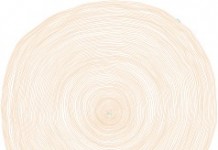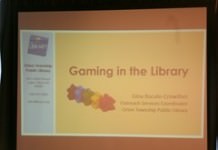 In a prior TeleRead blog article, I addressed digital annotation. But what about annotating life itself — human activity? After all, in a general sense there’s little difference between a digital object and something associated with a time and place.
In a prior TeleRead blog article, I addressed digital annotation. But what about annotating life itself — human activity? After all, in a general sense there’s little difference between a digital object and something associated with a time and place.
I ask this question since for over a year I’ve been pondering an idea, along with my friends James Linden, Eric Jacobs and David Rothman, of developing a public and free “GPS Repository.” This GPS repository is intended to be a central place where people submit GPS/time coordinates, some commentary and some metadata (and maybe even multimedia such as digital images), associated with noteworthy events they’ve experienced. Of course, it could also be used to record historical events.
For example, the event could be earth-shattering such as 9-11, or some personally rewarding experience such as encountering an unusual plant or animal while out on a hike in the local park. Or, having a great (or terrible) meal at a particular restaurant (the GPS coordinates could even point to a restaurant booth having a unique carving in the table top, such as I encountered when I visited the Rogue Brewery Pub in Newport, Oregon!) Even scientists, researchers, and others working in an official capacity, could use the general system to store, retrieve, and mine the time/place data.
Now imagine millions and eventually billions of ordinary people (as well as organizations) daily recording and annotating seminal events (important to them), and all that data available to the public at the touch of a finger — ready for them to search through and filter the data as they desire. As I pondered all the things that could be done with the data my mind began to swim — even outlining all the possible uses that I thought of (which would probably be only the tip of a very large iceberg) would make this article as long as a book!
The important point is that the open standard used to “digitally annotate life” can be, and should be, the same standard used to annotate digital objects. After all, with a digital object, a digital address is given which points to the digital object. The digital address could just as well be GPS coordinates (or other location scheme when GPS coordinates are not available) and date/time, pointing to some “object” in space and time.
Anyone interested in developing the digital repository to include annotations to both digital objects and real-world happenings, let me know. I have given a lot of thought, in essentially a global sense (but not at the gory “how do we implement it” technical level), to the requirements and feature-set of such a repository. And of course, I welcome your comments. Even though the repository must be free to all (to submit and to retrieve data), there are definitely business revenue models that would make this self-sustaining.































While I must admit that it struck me as mildly creepy at first, the more I think about it the more I like the idea. It could be an interesting way to address the hypothetical “If these walls could talk…” When I was doing research on my first-year college dorm (a converted, run-down former 1920’s luxury hotel) I found a lot of information about things that had happened in specific places, both from old newspaper articles and alumni. The building took on a new look for me after that, as I felt connected to some sort of legacy. Being able to turn on a little GPS unit and walk around seeing where someone got married, where someone did their homework, where someone vomited on the way back to their room… I can see it being a unique tool that could infuse a human touch into even the most everyday parts of the physical world.
Thanks, Quinn, for your example and insights.
As I noted in the article, a while back I let my mind run wild as to all the possibilties the GPS repository enables — for those who submit data, and for those who search for data. I have a text file with literally dozens of different use case scenarios like the one you mentioned.
I hope others reading this article and comments will likewise describe more use cases.
You know what…I’m actually fond of this idea…
And I find it somehow familiar…
ever read the “Hitchhiker’s Guide to the Galaxy”?
Bingo!
That is exactly what this would be…only not for the galaxy…at least at the moment.
The trouble is, once again, the tech involved.
I don’t think it’sd undoable, but it would have it’s problems.
Take GPS…you cannot make precise measurements with GPS alone at the moment because it is limited in the personal use due to it’s military origin to an accuracy of about 50m. (if I remember correctly)
Also, GPS will not work very well indoors.
Maybe you could combine GPS and GSM positioning?
Concering the device…you would indeed need something like the Hitchhiker’s guide to the Galaxy….
A rugged, lightweight device with long battery life (eink anyone?) and a lot of memory…or a permanent uplink to some sort of SAT-DSL.
You would also need some kind of fast and easy input method. Onscreen mini-keyboard is very awkward most of the time, so are the little mini-keyboards you get on many “professional” PDA Phones.
Maybe somebody could come up with a viable solution for that.
Concerning features, you could perhaps integrate a camera…a useful one for once, so that people can document their experiences with more than words.
Very interesting project…I whish I were in an industrial branch where I could work on somethign like htis…but as a musician…^^
I have been going over this in my head, but I still don’t quite understand how this is different from Google Earth.
Branko wrote:
I don’t know. When time permits, I’ll download and install Google Earth. My initial impression, though, is that personal annotation is downplayed, while in the GPS Repository, the main focus is personal entry of annotations. In addition, there would be no download of some sort of application — access to the data would be completely online. And does Google Earth allow one to take GPS data and quickly enter annotative content without accessing maps and so on? Maybe, but not sure.
Anyone know?
To answer Roland”s comment, I believe that the intentional errors added to GPS were turned off a few years ago, so now the public can get accurate GPS readings, down to a few feet or less.
I’m ok with that … but I think some Americans might get paranoid about it. and big brother will surely make some devious application out of it as well …
Microsoft Research has a project that explores some of the ideas that Jon Noring is suggesting I believe. It is called the World-Wide Media eXchange (WWMX). Here is an excerpt from article at Microsoft Research entitled “Shot on Location”:
The WWMX website FAQ states that a user can “browse the WWMX database not only by location, but by time, photo owner, media type. You can register your own photos with the WWMX. You can add “pop-tag” annotations to any photo you see. You can create Stories which are map-and-text-annotated photo albums.” However, full access to the database requires the download and installation of special client software.